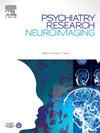Quantitative assessment of brain structural abnormalities in children with autism spectrum disorder based on artificial intelligence automatic brain segmentation technology and machine learning methods
IF 2.1
4区 医学
Q3 CLINICAL NEUROLOGY
引用次数: 0
Abstract
Rationale and objectives
To explore the characteristics of brain structure in Chinese children with autism spectrum disorder (ASD) using artificial intelligence automatic brain segmentation technique, and to diagnose children with ASD using machine learning (ML) methods in combination with structural magnetic resonance imaging (sMRI) features.
Methods
A total of 60 ASD children and 48 age- and sex-matched typically developing (TD) children were prospectively enrolled from January 2023 to April 2024. All subjects were scanned using 3D-T1 sequences. Automated brain segmentation techniques were utilized to obtain the standardized volume of each brain structure (the ratio of the absolute volume of brain structure to the whole brain volume). The standardized volumes of each brain structure in the two groups were statistically compared, and the volume data of brain areas with significant differences were combined with ML methods to diagnose and predict ASD patients.
Results
Compared with the TD group, the volumes of the right lateral orbitofrontal cortex, right medial orbitofrontal cortex, right pars opercularis, right pars triangularis, left hippocampus, bilateral parahippocampal gyrus, left fusiform gyrus, right superior temporal gyrus, bilateral insula, bilateral inferior parietal cortex, right precuneus cortex, bilateral putamen, left pallidum, and right thalamus were significantly increased in the ASD group (P< 0.05). Among six ML algorithms, support vector machine (SVM) and adaboost (AB) had better performance in differentiating subjects with ASD from those TD children, with their average area under curve (AUC) reaching 0.91 and 0.92, respectively.
Conclusion
Automatic brain segmentation technology based on artificial intelligence can rapidly and directly measure and display the volume of brain structures in children with autism spectrum disorder and typically developing children. Children with ASD show abnormalities in multiple brain structures, and when paired with sMRI features, ML algorithms perform well in the diagnosis of ASD.
基于人工智能自动脑部分割技术和机器学习方法的自闭症谱系障碍儿童脑部结构异常定量评估。
理论依据和研究目的利用人工智能脑结构自动分割技术探讨中国自闭症谱系障碍(ASD)儿童的脑结构特征,并利用机器学习(ML)方法结合结构磁共振成像(sMRI)特征诊断ASD儿童:方法:2023 年 1 月至 2024 年 4 月期间,共招募了 60 名 ASD 儿童和 48 名年龄和性别匹配的典型发育(TD)儿童。所有受试者均使用 3D-T1 序列进行扫描。利用自动脑分割技术获得每个脑结构的标准化体积(脑结构绝对体积与整个脑体积之比)。对两组脑结构的标准化体积进行统计比较,并将差异显著的脑区体积数据与ML方法相结合,对ASD患者进行诊断和预测:左侧纺锤形回、右侧颞上回、双侧岛叶、双侧顶叶下皮层、右侧楔前皮层、双侧丘脑、左侧苍白球和右侧丘脑在 ASD 组显著增加(P< 0.05).在六种ML算法中,支持向量机(SVM)和adaboost(AB)在区分ASD受试者和TD儿童方面表现较好,其平均曲线下面积(AUC)分别达到0.91和0.92:基于人工智能的大脑自动分割技术可以快速、直接地测量和显示自闭症谱系障碍儿童和发育正常儿童的大脑结构体积。自闭症谱系障碍儿童表现出多种脑结构异常,如果与sMRI特征相配合,ML算法在诊断自闭症谱系障碍方面表现良好。
本文章由计算机程序翻译,如有差异,请以英文原文为准。
求助全文
约1分钟内获得全文
求助全文
来源期刊
CiteScore
3.80
自引率
0.00%
发文量
86
审稿时长
22.5 weeks
期刊介绍:
The Neuroimaging section of Psychiatry Research publishes manuscripts on positron emission tomography, magnetic resonance imaging, computerized electroencephalographic topography, regional cerebral blood flow, computed tomography, magnetoencephalography, autoradiography, post-mortem regional analyses, and other imaging techniques. Reports concerning results in psychiatric disorders, dementias, and the effects of behaviorial tasks and pharmacological treatments are featured. We also invite manuscripts on the methods of obtaining images and computer processing of the images themselves. Selected case reports are also published.

 求助内容:
求助内容: 应助结果提醒方式:
应助结果提醒方式:


